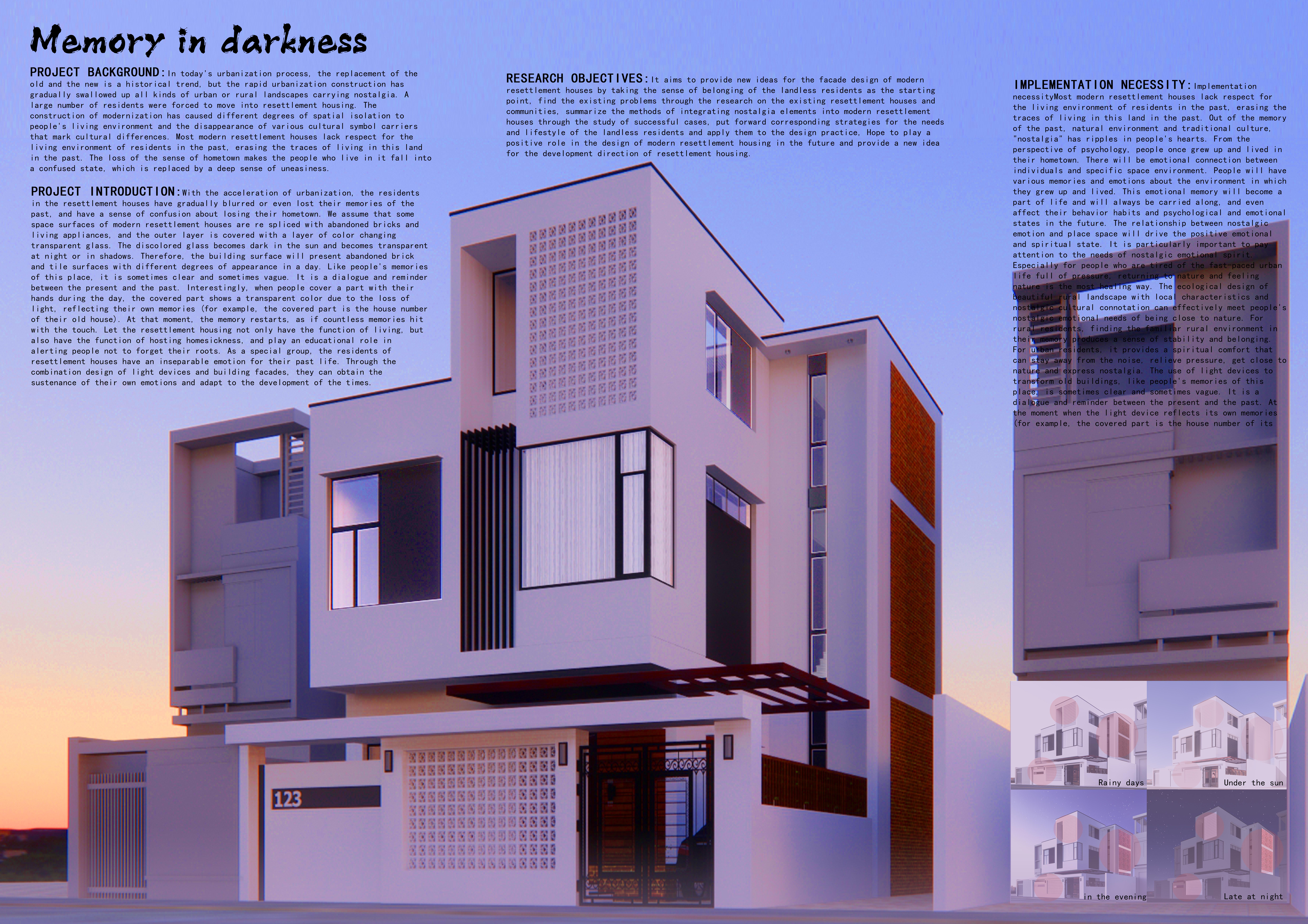Memory in darkness

Category
Daylight in buildings - Region 4: Asia and Oceania
Students
Wang Peng
yangsiya
guoxike
School
Shaoxing University
Country
China
Download
Download ↓
With the acceleration of urbanization, the residents in the resettlement houses have gradually blurred or even lost their memories of the past, and have a sense of confusion about losing their hometown. We assume that some space surfaces of modern resettlement houses are re spliced with abandoned bricks and living appliances, and the outer layer is covered with a layer of color changing transparent glass. The discolored glass becomes dark in the sun and becomes transparent at night or in shadows. Therefore, the building surface will present abandoned brick and tile surfaces with different degrees of appearance in a day. Like people’s memories of this place, it is sometimes clear and sometimes vague. It is a dialogue and reminder between the present and the past. Interestingly, when people cover a part with their hands during the day, the covered part shows a transparent color due to the loss of light, reflecting their own memories (for example, the covered part is the house number of their old house). At that moment, the memory restarts, as if countless memories hit with the touch. Let the resettlement housing not only have the function of living, but also have the function of hosting homesickness, and play an educational role in alerting people not to forget their roots. As a special group, the residents of resettlement houses have an inseparable emotion for their past life. Through the combination design of light devices and building facades, they can obtain the sustenance of their own emotions and adapt to the development of the times.

































